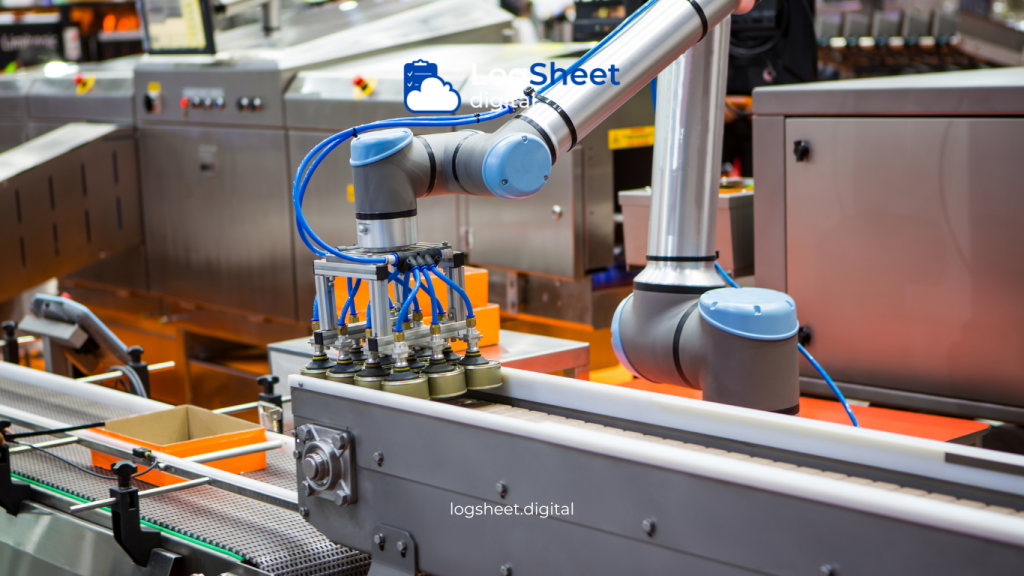In today’s digital era, many companies are shifting from traditional methods to digital solutions to enhance their operational efficiency. One of the innovations that has emerged is the use of digital logsheets. Digital logsheets offer a more effective way to record, monitor, and analyze operational data compared to conventional paper-based logsheets. This article will discuss the role of digital logsheets in modernizing company operations, their benefits, the challenges that may be faced, and the steps for implementation.
What is a Digital Logsheet?

Read More: Towards Operation 4.0: Industry Transformation with Digital Logsheets
Digital logsheets are electronic systems used to record important information in daily operations. By using specialized software, users can enter data directly, which is then stored in a digital format. This allows for easier access, faster data analysis, and more efficient reporting. Unlike paper-based logsheets, digital logsheets offer the capability to integrate data from various sources and facilitate collaboration among teams.
Benefits of Digital Logsheets in Operations
1. Time Efficiency
One of the greatest benefits of digital logsheets is time efficiency. With an automated system, users can quickly input data without the need to write on paper and then transfer it to another system. The entered data can be immediately analyzed and reported, saving valuable time for operational teams.
2. Higher Data Accuracy
Digital logsheets reduce the risk of human error that often occurs in manual recording. With validation features in the software, users can ensure that the entered data meets specific standards. This is crucial for maintaining the quality of data used in decision-making.
3. Real-Time Data Access
With digital logsheets, information can be accessed in real-time by all authorized team members. This allows for better collaboration and faster decision-making. Teams can respond to emerging issues more effectively and promptly.
4. Cost Savings
Using digital logsheets can reduce costs associated with managing physical documents. By minimizing the use of paper, ink, and storage space, companies can achieve significant operational cost savings. Additionally, the efficiencies gained from reduced time and errors can also contribute to cost savings.
5. Integration with Other Systems
Digital logsheets can be integrated with other management systems, such as ERP (Enterprise Resource Planning) or CRM (Customer Relationship Management) systems. This allows for seamless data exchange between different departments and enhances visibility of information across the organization.
Challenges in Implementing Digital Logsheets

Read More: Improving Operational Efficiency in Industry with Digital Logsheets
Despite numerous benefits, the implementation of digital logsheets also faces several challenges.
1. Technological Constraints
Not all organizations have the adequate technological infrastructure to support digital logsheets. Some companies may require hardware and software upgrades, which can incur additional costs.
2. Employee Skills and Training
Employees need to be trained to use the digital logsheets effectively. Without proper training, employees may struggle to adapt to the new technology. Therefore, companies must invest time and resources in training.
3. Data Security
Digital data can be a target for cyberattacks. Therefore, companies must ensure that their digital logsheets are secure and protected from unauthorized access. Implementing strict security measures is essential.
4. Organizational Culture Change
Transitioning from paper-based logsheets to digital systems also involves changing the organizational culture. Employees may feel comfortable with the old methods and reluctant to adapt to new systems. Companies need to manage this change effectively to ensure a smooth transition.
Steps for Implementing Digital Logsheets

Read More: Operational Efficiency: Implementation of Digital Logsheets
To optimize the use of digital logsheets, companies need to follow several implementation steps.
1. Identifying Needs
Before starting the implementation, companies need to identify their specific needs. What is the main objective of using digital logsheets? Is it to improve efficiency, accuracy, or data accessibility? Setting clear goals will help in choosing the right system.
2. Choosing the Right Software
Once the needs are identified, the next step is to select suitable digital logsheets software. There are many options available in the market, so it’s important to research and evaluate. Choose software that is user-friendly, secure, and can integrate with existing systems.
3. Employee Training
After selecting the software, companies need to provide training for employees. Training should cover how to use the system, manage data, and troubleshoot potential issues. Ensure employees feel comfortable and confident when using digital logsheets.
4. Testing and Adjustments
After training, conduct tests to ensure the system functions well. During the trial period, collect feedback from users and make adjustments as necessary. This step is important to ensure that the system meets the needs of all involved parties.
5. Full Launch
Once all adjustments are made, proceed with the full launch of the digital logsheets system. Ensure all employees know how to access and use the system. Always provide technical support for employees who may encounter difficulties.
Case Study: Implementation of Digital Logsheets in a Manufacturing Company

Read More: Operational Efficiency of Digital Logsheets at Pertamina EP CEPU by PT. Nocola IoT Solution
A large manufacturing company decided to shift from paper-based logsheets to digital logsheets to enhance their operational efficiency. Before implementation, the company faced challenges with slow data recording and numerous errors in reporting.
After selecting digital logsheets software, the company trained all employees and conducted system trials. As a result, they successfully reduced the time spent on data recording by 50% and decreased reporting errors by 75%.
With more accurate and faster data, managers could make better decisions and improve production efficiency. This success not only increased productivity but also significantly reduced operational costs.
The Future of Digital Logsheets in Operations

Read More: Enhance Business Operational Efficiency with Digital Logsheets
With advancements in technology such as the Internet of Things (IoT) and artificial intelligence (AI), the future of digital logsheets looks bright. IoT devices can be used to automatically collect data and send it to digital logsheets, reducing the need for manual input.
Additionally, with the application of AI, data analysis can be conducted more deeply to generate valuable insights for companies. This will enable companies to be more proactive in facing operational challenges and leveraging existing opportunities.
Conclusion

Read More: Improving Digital Operations of Logsheets by PT. Nocola IoT Solution at PEPC
Digital logsheets are an important step towards modernizing company operations. By offering time efficiency, data accuracy, and real-time accessibility, digital logsheets can help companies optimize their operational performance.
However, implementing digital logsheets is not without challenges. Companies need to consider technological constraints, employee training, data security, and cultural shifts. By following the right implementation steps, companies can maximize the benefits of digital logsheets.
With the continuous advancement of technology, the role of digital logsheets in operations will become increasingly important. In the future, digital logsheets will not only be tools for data recording but also drivers of innovation and efficiency in every aspect of company operations.






comments (0)